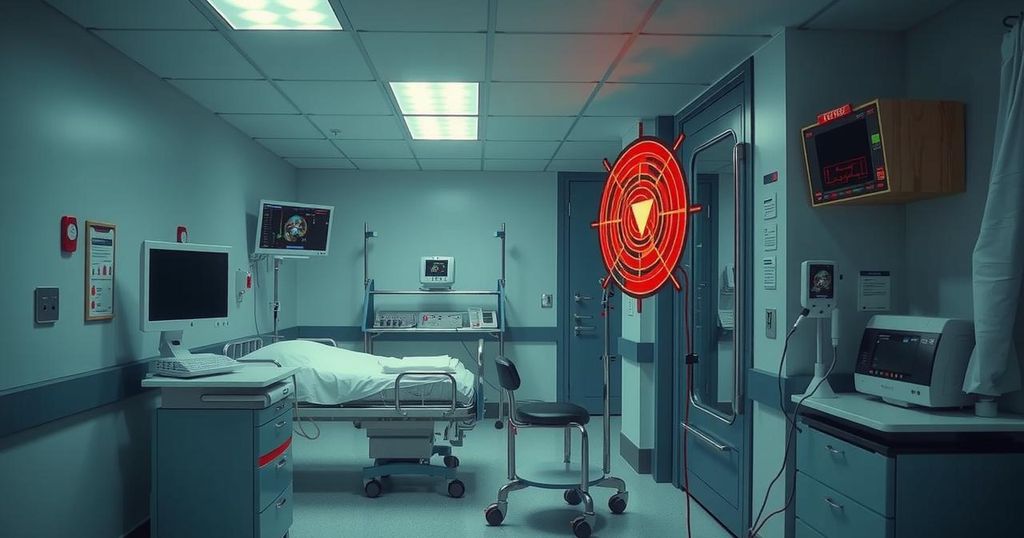Optimizing Hospital Preparedness Through Effective Earthquake Early Warning Protocols
Earthquake early warnings provide hospitals with critical advance notice of seismic events but are only effective if accompanied by meticulous preparedness protocols. Sandra Vaiciulyte’s research indicates that the responsiveness of hospital staff to these warnings, influenced by training and existing protocols, significantly impacts their ability to protect patients effectively. The study emphasizes the need for detailed and tailored emergency plans within hospital settings to optimize the benefits of early warning systems.
Earthquake early warning systems (EEWs) are vital tools for enhancing preparedness in hospitals, as they provide time-sensitive alerts that enable medical staff to take protective actions during an impending seismic event. The effectiveness of these systems, however, is heavily contingent upon the establishment of comprehensive protocols tailored to the unique needs of each medical facility. Sandra Vaiciulyte, an interdisciplinary researcher from the Universidad Nacional Autónoma de México, highlights in her recent study that hospitals’ preparedness determines the efficacy of EEWs. While Mexico is notable for its advanced warning systems, such as the Sistema de Alerta Sísmica Mexicano (SASMEX), deficiencies such as staffing limitations and financial constraints hinder the execution of adequate response protocols. Vaiciulyte’s research reveals that while EEWs can deliver alerts seconds to minutes in advance—allowing time for necessary safety measures—the gap between warning issuance and actionable staff response necessitates further examination. As observed, the integration of elements learned from successful implementations in countries like Japan and California is crucial. Medical facilities must design detailed response strategies that correspond to the different departments within a hospital. Unfortunately, current protocols often emerge from ad hoc decisions rather than structured guidelines. Vaiciulyte’s research illustrates a pressing need for rigorous evaluation of hospital protocols to enhance the safeguarding of vulnerable patients. Through interviews with officials and staff across hospitals, pertinent themes such as risk awareness, warning communication, and execution of protective actions were discussed. The findings indicate a significant lack of training and familiarity with EEWs which contributes to inefficiency during emergencies. Additionally, variability in emergency protocol adherence highlights the necessity for comprehensive drills and institutional commitment to preparedness. Vaiciulyte’s work serves as a pivotal first step toward understanding how hospitals can better capitalize on earthquake early warnings, thereby reinforcing the importance of proactive planning and rigorous training protocols. Through disaggregated empirical insights, her research lays the groundwork for future quantitative studies that will probe deeper into optimizing disaster risk reduction strategies in healthcare settings.
The topic of earthquake preparedness is of paramount importance, particularly in regions susceptible to seismic activity. Earthquake Early Warning systems (EEWs) are designed to detect seismic waves and provide advance warnings to reduce casualties and optimize response efforts. For hospitals, which often contain delicate equipment and vulnerable patients, the timely communication of a looming earthquake event is crucial. However, the success of these systems hinges on the existence of well-defined response protocols tailored to the specific environments within hospitals. Sandra Vaiciulyte’s recent research not only elucidates the state of hospital preparedness in response to EEWs but also advocates for the implementation of structured protocols across different hospital units, highlighting a glaring gap in existing measures and the need for comprehensive preparedness strategies.
In conclusion, the integration of earthquake early warning systems in hospitals holds the potential to significantly enhance patient safety during seismic events; however, the realization of this potential is contingent upon the establishment of effective response protocols. The research conducted by Sandra Vaiciulyte underscores the need for hospitals to evaluate their current preparedness levels, address financial and staffing deficiencies, and engage in thorough training exercises. As seismic risks continue to pose significant hazards in many regions, developing robust protocols that incorporate lessons learned from successful models in other countries will be vital in ensuring the safety of patients and staff alike during emergencies.
Original Source: temblor.net




Post Comment